From self-selection to self-service
The long journey begins in the 1950s
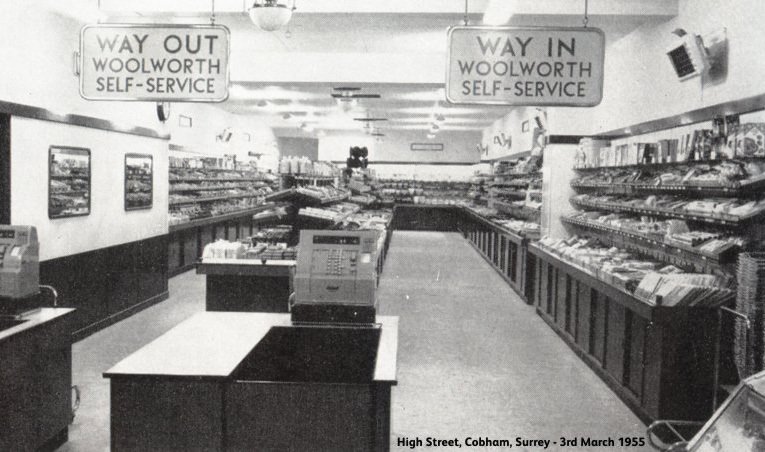
3 March 1955 was a red-letter day for F. W. Woolworth, when the company finalled bowed to the inevitable and started, little by little, to embrace the idea of self-service. The new store in High Street, Cobham, Surrey was built and opened in a self service, supermarket-style layout, following a pattern established by the chain's American parent company, which had started to experiment in 1950 and had quickly moved the concept into roll-out. The Americans found three key benefits:
- improved customer service with no need to wait at each counter, leading to larger average purchases ("basket size")
- more space to sell merchandise as fewer tills and service points were needed
- labour savings by having fewer people tied up ringing up customer purchases a single item at-a-time
Each British Director had reservations about self-service and feared the clientele at Cobham would consider the approach "un-British".
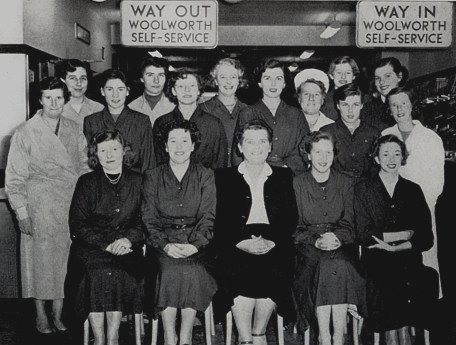
Lots of thought went into adapting the chain's standard layout and fixtures to suit a self-service operation. Among other firsts on show at Cobham were
- checkout desks at the front of the store
- the first shopping baskets
- designated "in" and "out" doors
- cash registers that added up purchases
- taller counters with more products on sale
Every colleague at Cobham was trained to handle customer questions and resistance, with a script of off-the-peg answers to repeat parrot-fashion. The affluent Surrey suburb had been chosen partly because of its reputation as a nice place with nice people, but mainly as a backwater well away from headquarters in New Bond Street, Mayfair, London W1.
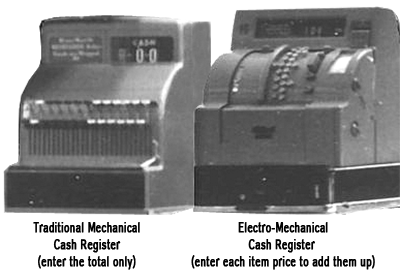
Customers were invited to take a basket, collect up the goods they wanted and taken them to a large 'cash and wrap desk' at the front of the store. This style is totally familiar today, but was a big departure for the shoppers of the day.
For added accuracy and better service, the store was equipped with the first eletro-mechanical cash registers. Up until this point staff had used mental arithmetic (or ready-reckoner tables) to add up the shopping. No-one even dreamt of pocket calculators or mobile phone apps at the time!
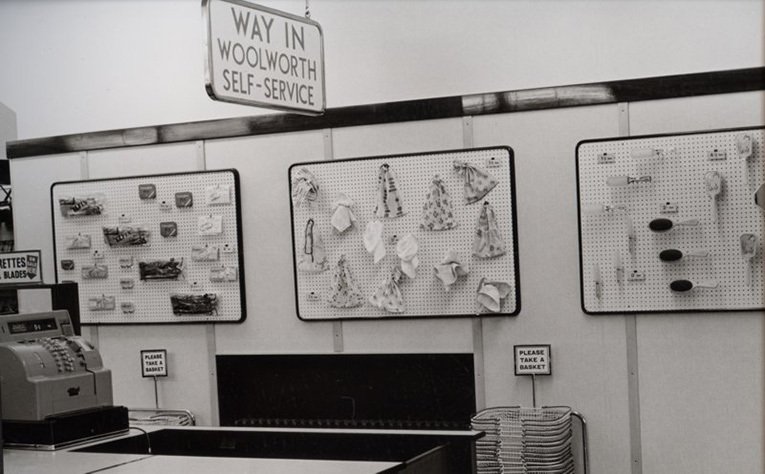
The whole concept of asking customers to take a basket, to serve themselves and take their purchases to a checkout at the front of the store was brand new. A task force thought up a series of slogans and messages for customers to explain how it all worked.
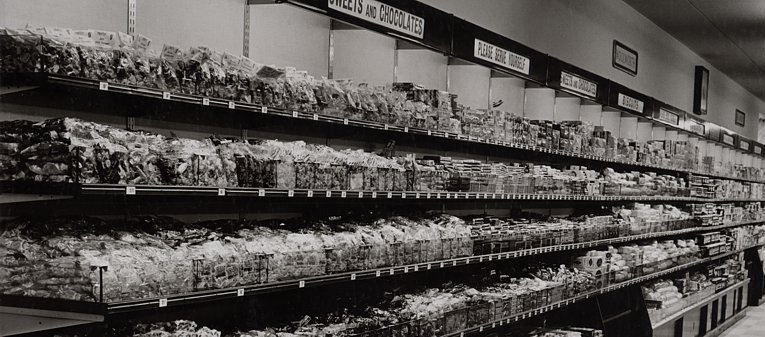
The first store followed the trial and error principle. Many things were right, but there were some big blunders too. For example weigh-out products like pic'n'mix were dropped in favour of half pound bags of a single sweet. Electric flex and Storey's contact (which were sold by the yard - approximately 94cm - in personal service stores) were dropped. No-one considered the idea of displaying products hanging, and the shopfittings did not include pegboard or slatted fixtures. But there were positives too. Illuminated directional signs in the cornice helped customers to find the items they wanted. Tickets in the shelf-edge strip showed the price of each product. Every product was individually price marked with a label or stamp. The store also had some innovative fixtures to improve the display of a few ranges.
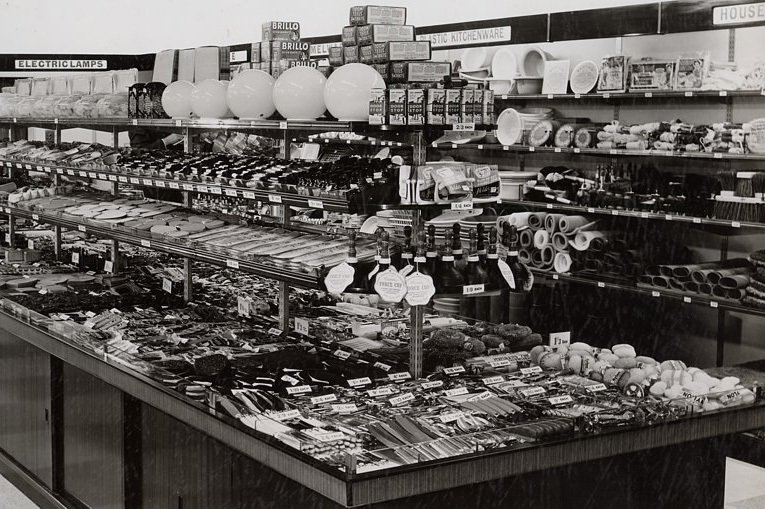
The first self-service island counters, like this one pictured in Didcot, Oxfordshire in 1956, had extension pieces extending out of the middle of a standard tabletop. The store had multi-tiered displays, which allowed the company to expand the range of products available. Before self-service store fixtures normally had a single tier only.
Many of the products that shops display hanging today were shown standing on end, wedged between glass dividers on the table top of the island counter. The "sellphasta" shopfittings chosen for wall displays by the company did not include pegboard panels or slats. They were subsequently adapted by bolting an awkward metal "flat bar" into the strips for the shelf brackets and then screwing projection arms onto the bar. This technique which was widely used in the 1960s can still occasionally be seen in independent stores today. It works well when all of the products are the same size but today is generally considered too inflexible for modern retailing.
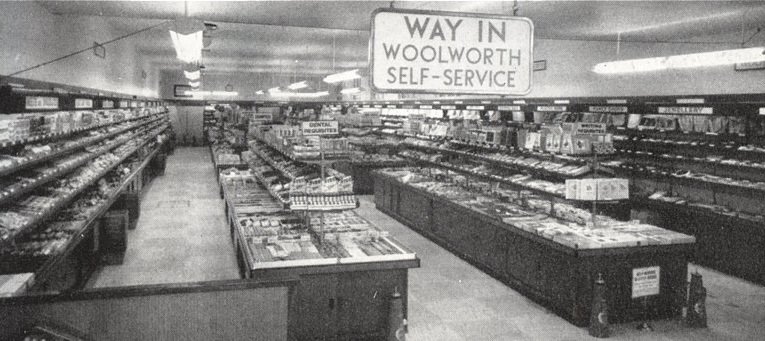
Between 1954 and 1960 the firm continued to refine its self-service formula, introducing the approach into stores of different shapes, sizes and geographic areas. Around a fifth of the stores opened between 1958 and 1966 operated the self-service model, with the remainder continuing to use the tried and tested personal service method.

In 1957 Woolworth bosses went a step further, opening a much larger self-service store in Crawley New Town. A small store in the High Street was replaced by a much larger branch in nearby Queen's Square. Executives hoped that a halo effect from the marketing of the new town, which portrayed it as ultra-modern, would help to break down customer resistance to the new format. The store layout included a number of new display ideas, with fully redesigned fixtures and fittings. For the first time gondola islands were used, with shelving from top to bottom, without understocks cupboards at the base. This style of shelving remains the standard for most retailers in the twenty-first century. At the time it was a first and proved quite controversial. Some customers complained that they had to stoop to pick up items on the bottom two shelves, while company bosses worried that the stock cost to fill the Crawley store was almost double the level of a comparable personal-service store. Despite the reservations of some older customers, the overall feedback from the Crawley shoppers was positive. Most liked the layout and thought the store was very up-to-date.
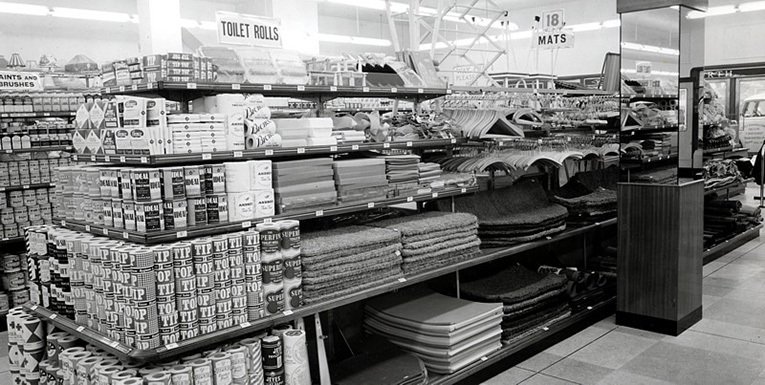
These self-service gondola island counters were a big step forward, with multiple tiers which could accommodate more stock. Projection arms were attached to flat bars to display items like coat hangers, brooms and some brushes hanging up. This approach to display was extended to many of the larger stores during the 1960s.
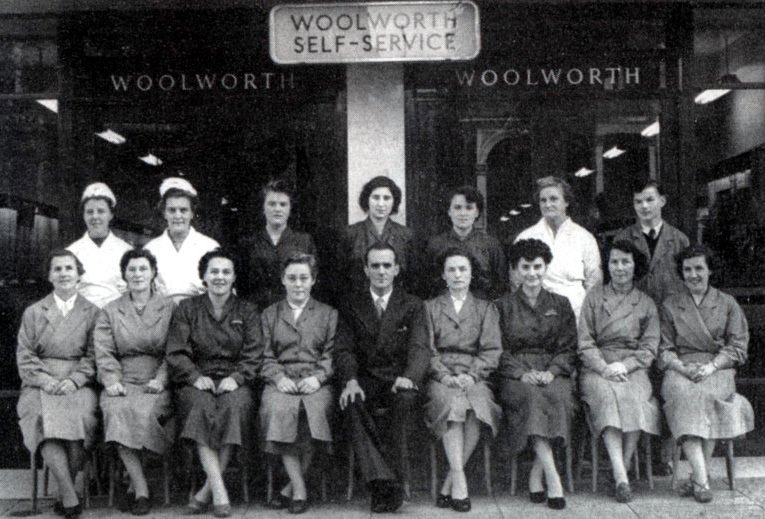
For more examples of the move to self-service and the difference versus self-selection please visit our interactive 1950s store.
Shortcuts to related content
1950s Gallery
H.M. Queen Elizabeth II's Coronation
Fiftieth birthday celebrations
Museum Navigation